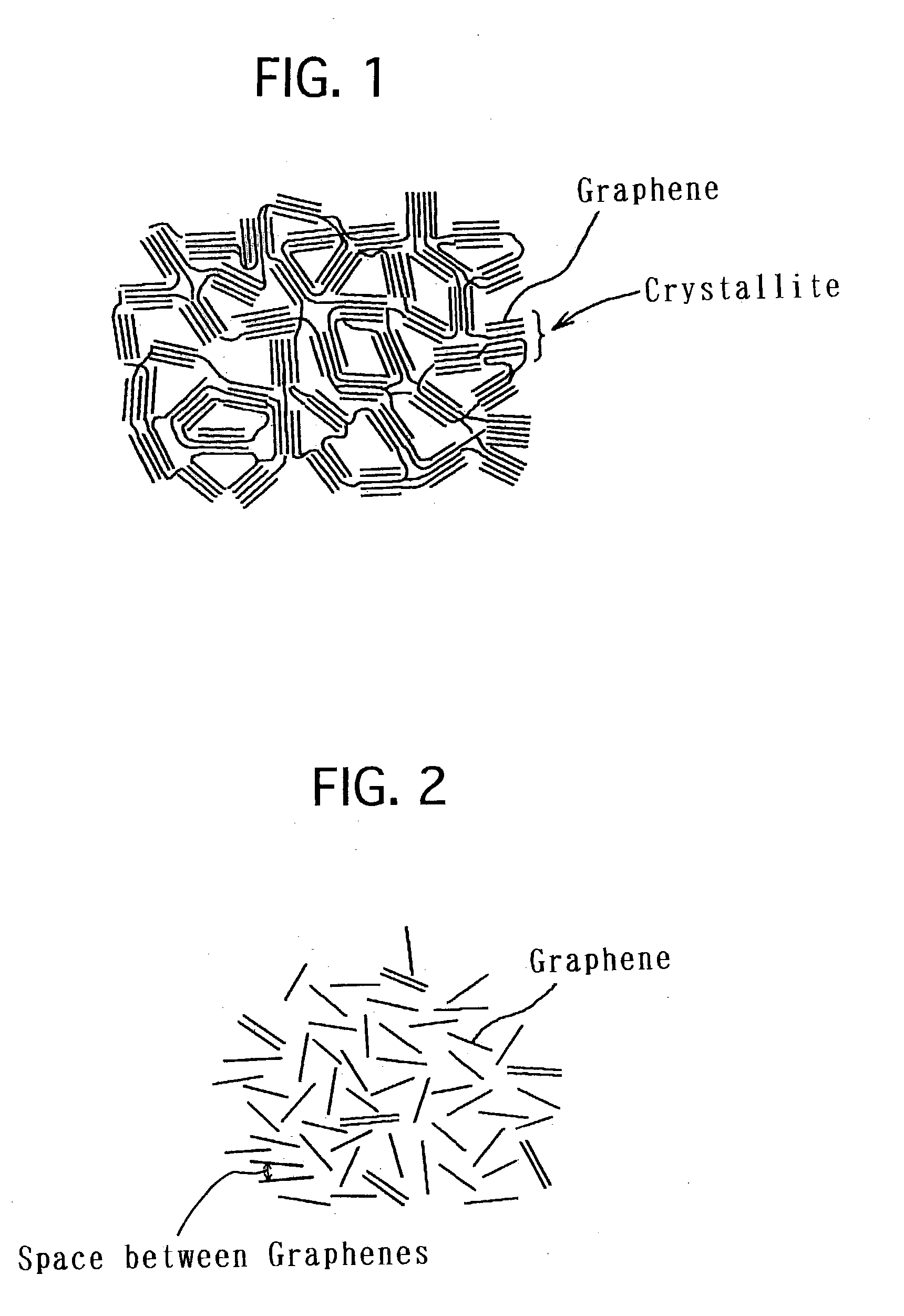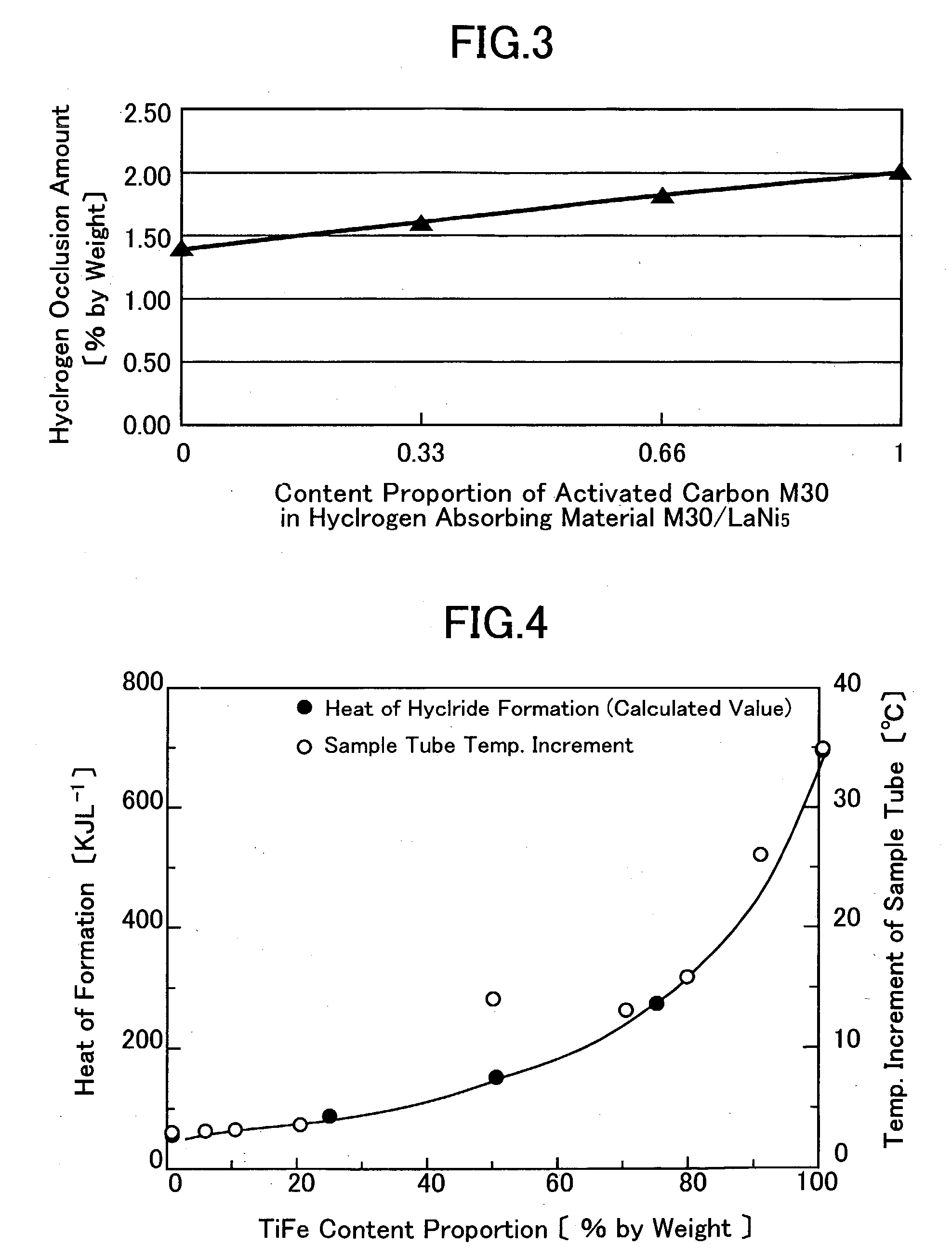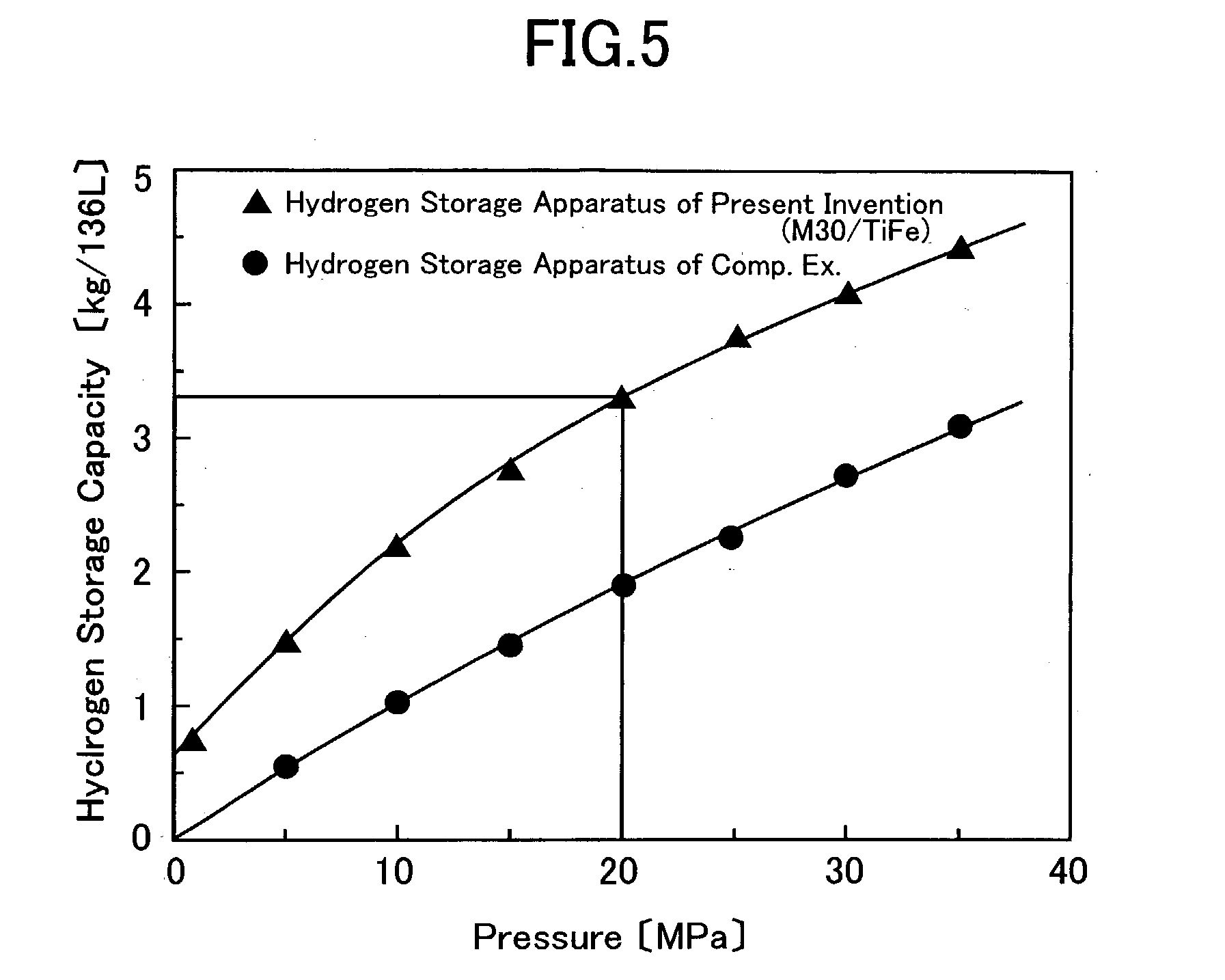Hydrogen storage material and hydrogen storage apparatus
a technology of hydrogen storage and hydrogen storage materials, which is applied in the direction of other chemical processes, packaging goods, separation processes, etc., can solve the problems of large hydrogen storage capacity per unit weight, large cost increase, and heavy hydrogen absorbing alloys
- Summary
- Abstract
- Description
- Claims
- Application Information
AI Technical Summary
Problems solved by technology
Method used
Image
Examples
experimental example 1
[0060] Based on the aforementioned embodiment modes, the carbon material for absorbing hydrogen according to the present invention, being the first hydrogen storage material, was produced variously. Then, the produced carbon materials for absorbing hydrogen were accommodated in containers to constitute hydrogen storage apparatuses, and their hydrogen storage capacities were measured. Hereinafter, descriptions will be made on the production of the carbon materials for absorbing hydrogen and the measurement results of the hydrogen storage capacities of the hydrogen storage apparatuses.
(A) Production of Carbon Materials for Absorbing Hydrogen
(1) Carbon Material of #11
[0061] As the carbonaceous substance, petroleum coke, and, as the alkali metal hydroxide, potassium hydroxide hydrate (water content about 15%) were used, respectively. The petroleum coke and the potassium hydroxide were mixed with a proportion of 1: 5 by weight ratio to prepare a raw material mixture. This raw material mi...
experimental example 3
[0081] Based on the aforementioned embodiment modes, hydrogen absorbing materials, used in the hydrogen storage apparatus according to the present invention, were produced variously, and the hydrogen storage capacities and the like of each of them were measured. Hereinafter, descriptions will be made on the production of the hydrogen absorbing materials, the measurement of the hydrogen storage capacities, and so forth.
(1) Hydrogen Absorbing Material of First Series
(a) Production of Hydrogen Absorbing Material
[0082] As the porous carbon material, activated carbon M30 (brand name, made by Osaka Gas Chemical Co., Ltd.), whose specific surface area was 3,220 m.sup.2 / g, was used, as the hydrogen absorbing alloy, LaNi.sub.5 (average particle diameter about 300 .mu.m) or TiFe (average particle diameter about 500 .mu.m) was used to produce hydrogen absorbing materials. First, adsorbed moisture and the like were removed by heat-treating activated carbon M30. The heat treatment was carried ou...
PUM
| Property | Measurement | Unit |
|---|---|---|
| Length | aaaaa | aaaaa |
| Percent by mass | aaaaa | aaaaa |
| Pressure | aaaaa | aaaaa |
Abstract
Description
Claims
Application Information
 Login to View More
Login to View More - R&D
- Intellectual Property
- Life Sciences
- Materials
- Tech Scout
- Unparalleled Data Quality
- Higher Quality Content
- 60% Fewer Hallucinations
Browse by: Latest US Patents, China's latest patents, Technical Efficacy Thesaurus, Application Domain, Technology Topic, Popular Technical Reports.
© 2025 PatSnap. All rights reserved.Legal|Privacy policy|Modern Slavery Act Transparency Statement|Sitemap|About US| Contact US: help@patsnap.com



